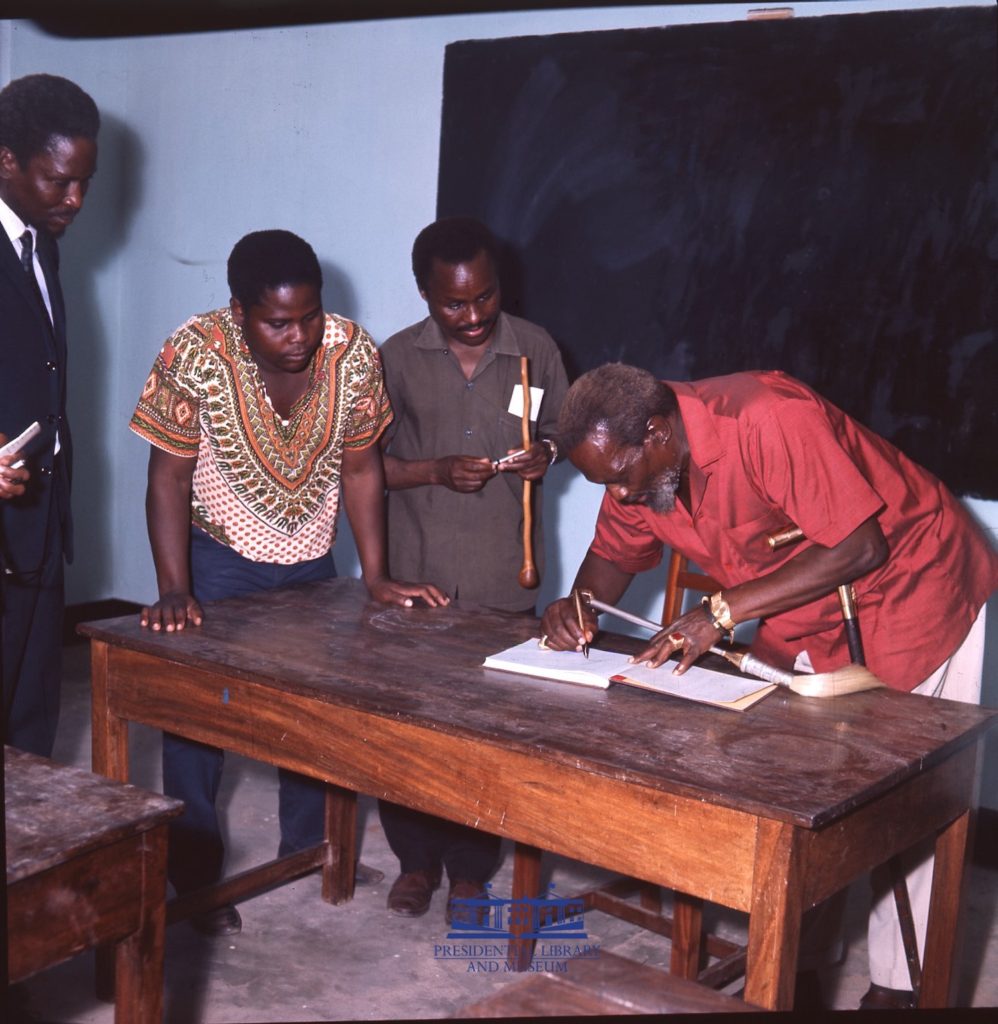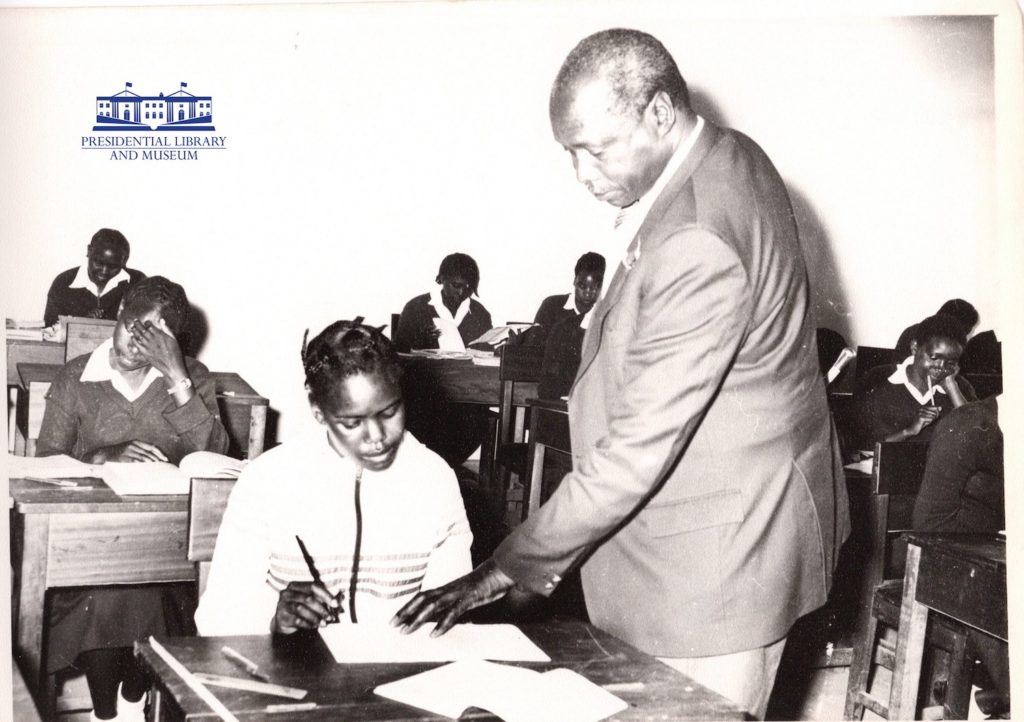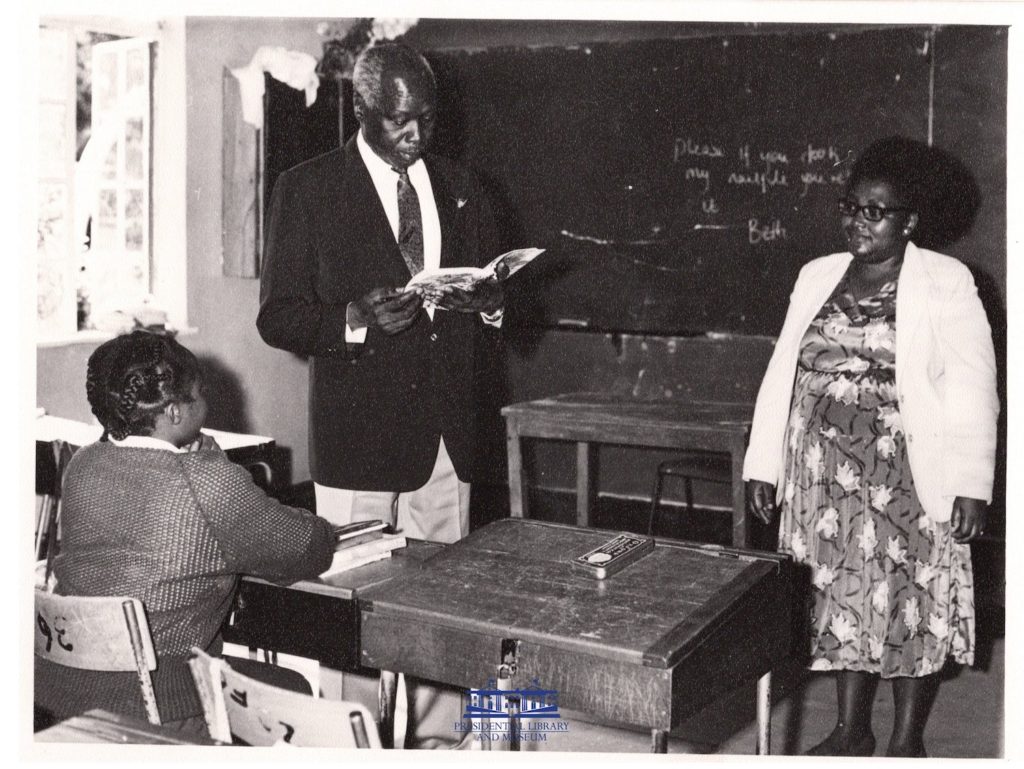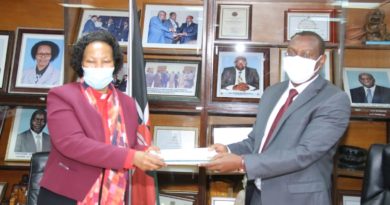Lessons From the Past – How Former Presidents of Kenya Contributed to the Growth of Education
From Presidential Library and Museum Facebook/facebook.com/OPLMKe/
Wednesday, 8th September, was World Literacy Day and to celebrate the day, the Presidential Library and Museum – Kenya brings you the story of how the three Former Presidents placed education at the top of the national development agenda.
𝐏𝐫𝐞𝐬𝐢𝐝𝐞𝐧𝐭 𝐉𝐨𝐦𝐨 𝐊𝐞𝐧𝐲𝐚𝐭𝐭𝐚
As Kenya’s first leader after independence, Mzee Kenyatta made education one of the biggest priorities of his Administration.
Poverty, ignorance and diseases were the three main issues identified as enemies of the nation after independence and Mzee Kenyatta made a promise to eliminate them.
The rapid expansion of the education system was imperative during the early years of independence since the country was also engaged in the Africanisation of its workforce.
During the 1968 Madaraka Day celebration, Mzee Kenyatta said, “Education was perhaps our greatest priority, and must still be so regarded, so that more and more of our young people can be prepared for future tasks calling for executive skills and grasp of technology.”
At the time of independence, the so-called African schools provided a four-year primary education course for Kenyans. Mzee Kenyatta’s government brought a changeover to a seven-year course and integrated all primary education into a single system.
Despite the limited resources available to the newly independent nation, the government embarked on a rapid expansion of primary and secondary schools.
By mid 1968, the number of primary schools had increased to more than 6,000 and the total enrolment reached more than 1.25 million from less than 900,000 in 1963.
The number of students in secondary schools had increased to 80,000 by 1968 up from less than 30,000 at the time of independence.
Mzee Kenyatta viewed education as a necessary tool for citizens to play an effective role in national development as well as politics.
He said Kenyans, who had just come out of colonial rule needed education in order to appreciate and enjoy their freedom.
“Indeed, an illiterate man cannot be truly free; he is a slave to other people’s thought and understanding. I therefore attach great importance to the literacy campaign,” said Mzee Kenyatta in his speech to the nation during the 1965 Jamhuri Day celebration.
𝐏𝐫𝐞𝐬𝐢𝐝𝐞𝐧𝐭 𝐃𝐚𝐧𝐢𝐞𝐥 𝐚𝐫𝐚𝐩 𝐌𝐨𝐢
President Daniel arap Moi, Kenya’s second President, was a champion of education who, as a former school teacher, passionately improved access to education at all levels.
He increased the number of primary and secondary schools and introduced free lunches and school milk, famously known as Maziwa ya Nyayo, to encourage enrolment.
He oversaw the establishment of numerous girls secondary schools and implemented an initiative that ensured every district in the country had a well-equipped girls secondary school.
President Moi also expanded teacher training colleges, technical training institutions as well as universities.
By the time he succeeded Mzee Kenyatta in 1978, the only university in Kenya was the University of Nairobi with a total enrolment of 7,000 students.
Kenyatta University College was then a constituent college under the University of Nairobi.
By the time President Moi retired from office in 2002, Kenya had six public universities with a total enrolment of more than 62,000 students.
He said Kenya’s education system was one of the best in Africa because unlike Kenya, many African countries deliberately limited access to education since their rulers feared the challenge of having an educated population.
“Some African countries are denying their children education because they fear that an educated population will give them problems because they will have knowledge. I do not see the problem they fear. Our youth should be given the best education. I am happy to see a younger educated generation that is focused on the future and does not thrive in tribalism,” said President Moi.
President Moi frequently visited public universities and would sometimes stop by unannounced to join students for lunch and discussions.
The second President is also remembered for the introduction of the 8-4-4 education system that was replaced recently with the Competence Based Curriculum..
𝐏𝐫𝐞𝐬𝐢𝐝𝐞𝐧𝐭 𝐌𝐰𝐚𝐢 𝐊𝐢𝐛𝐚𝐤𝐢
President Mwai Kibaki came into office at a time it had become expensive for parents to take their children to primary school.
In January 2003, President Kibaki introduced a free and compulsory primary education initiative.
The initiative increased new primary school enrolment by close to two million.
News of President Kibaki’s initiative reverberated across the world and attracted praise for the third President of the Republic.
In November 2004, former U.S. President Bill Clinton said President Kibaki was the one living person he would most like to meet because of the Kenyan government’s decision to make primary school absolutely free.
Clinton said the Kenyan leader’s decision to provide free and compulsory primary education, would, by the end of that year, affect more lives than any president had done or would ever do.
Clinton visited Kenya in July 2005 and met with President Kibaki.
The impact of free universal primary education continues to be felt as Kenya is now a leader in Africa in terms of productivity potential of the youth.
The 2018 World Bank Human Capital Index placed Kenya third in Africa after Seychelles and Mauritius in terms of parameters such as expected years of school and harmonised test scores.
A child in Kenya is likely to have 11 years of education by the age of 18, almost equal to the global average of 11.2, and much higher than the sub-Saharan Africa average of 8.1.
In comparison, children in South Africa and Nigeria, the two largest economies in Africa, were likely to have 8.2 and 9.3 years of school respectively by the age of 18 years.







